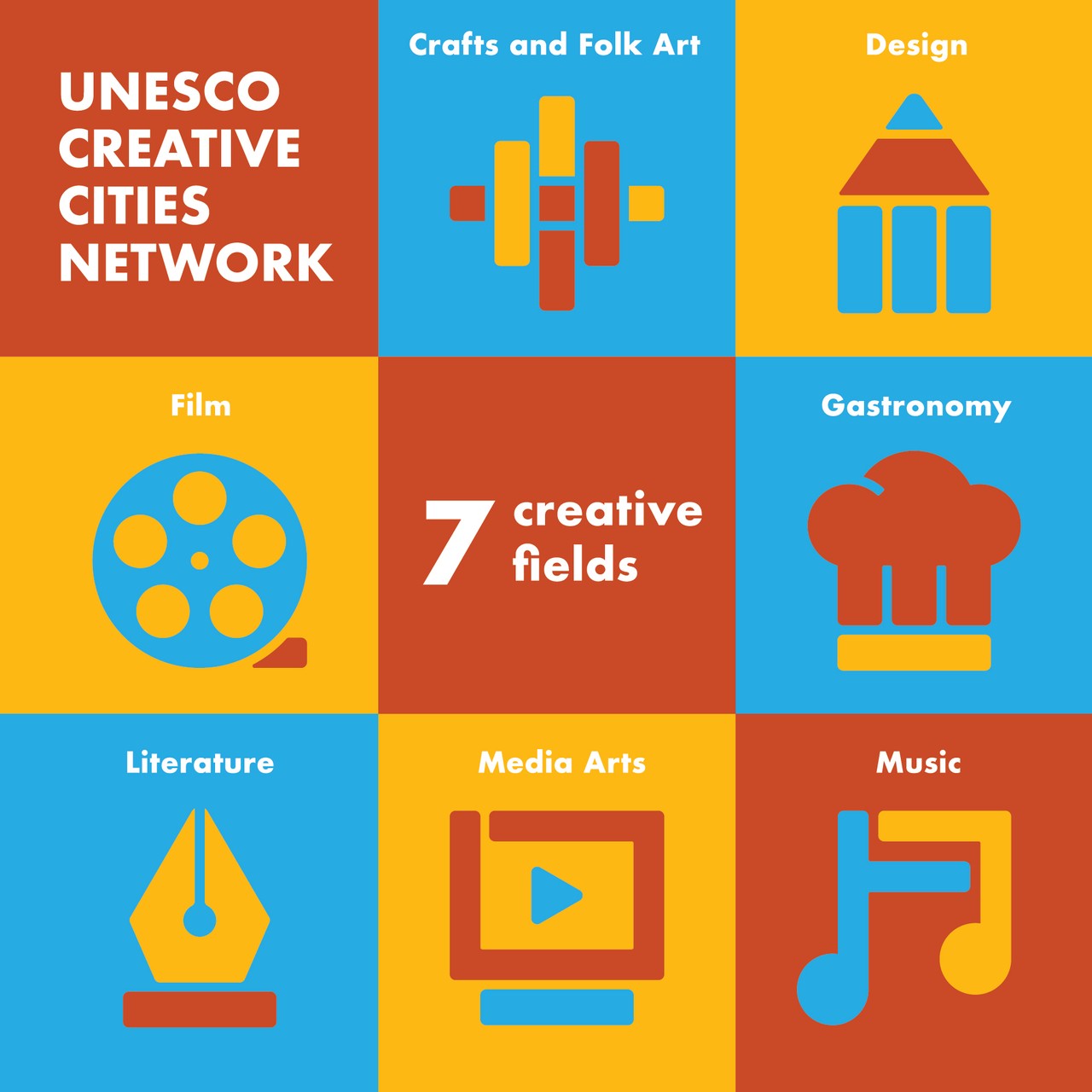UCCN : UNESCO Creative City Network
Context
Culture and creativity play a key role in sustainable urban development. They contribute to diversifying the economy and generating jobs but they also enhance the quality of life of citizens by participating to a city's social fabric and cultural diversity. Similarly, by boosting cultural participation and by regenerating public spaces, creativity also becomes an enabler of inclusion and well-being. Cities are at the heart of these development processes based on the potential of culture and creativity. Today, more than half of the world’s population live in urban areas and three quarters of economic activity is concentrated here, including a large share of the creative economy. Drivers for growth, innovation and inter-cultural dialogue, cities also polarize many challenges. Urban development strategies must be periodically re-assessed and re-designed, in light of the contemporary issues be they economic, environmental, demographic or social.
THE UNESCO CREATIVE CITIES NETWORK
Launched in 2004, the UNESCO Creative Cities Network (UCCN) strengthens cooperation with and among cities that have recognized creativity as a strategic factor of sustainable development on an economic, social, cultural and environmental level. By joining the Network, cities commit to sharing best practices, developing partnerships that support creativity and cultural industries, strengthening participation in cultural life and integrating culture in urban development plans. Building on this commitment, the 246 member cities from over 80 countries that currently form this network, work together towards a common mission: placing creativity and cultural industries at the core of their development plans at the
Local level and actively cooperating at the international level, in line with the 2030 Agenda for Sustainable Development and the New Urban Agenda.The UNESCO Creative Cities Network covers seven creative fields: Crafts and Folk Art, Design, Film, Gastronomy, Literature, Media Arts and Music. While cities from a same creative field collaborate intensely to develop joint partnerships, all member cities are also working transversally, in particular at common gatherings such as international meetings or the Network’s Annual Conferences.
OBJECTIVES
The UNESCO Creative Cities Network aims to:
• strengthen international cooperation between cities that have recognized creativity as a strategic factor of their sustainable development;
• stimulate and enhance initiatives led by member cities to make creativity an essential component of urban development, notably through partnerships involving the public and private sectors and civil society;
• strengthen the creation, production, distribution and dissemination of cultural activities, goods and services;
• develop hubs of creativity and innovation and broaden opportunities for creators and professionals in the cultural sector;
• improve access to and participation in cultural life, as well as the enjoyment of cultural goods and services, notably for marginalized or vulnerable groups and individuals;
• fully integrate culture and creativity into local development strategies and plans.
AREAS OF ACTION
The objectives of the UNESCO Creative Cities Network are implemented both at the level of the cities and at the international level, notably through the following areas of action:
• sharing experiences, knowledge and best practices;
• pilot projects, partnerships and initiatives associating the public and private sectors, and civil society;
• professional and artistic exchange programmes and networks;
• studies, research and evaluations on the experience of the Creative Cities;
• policies and measures for sustainable urban development;
• communication and awareness-raising activities.
For more infomation please visit
UCCN : UNESCO Creative City Network
